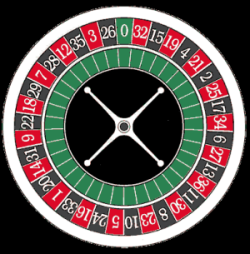
Your Trusted Internet Resource
Website Analytics
APRIL 2013
---------------------------------
If you cannot measure it you cannot manage it, therefore you cannot control the income from it. The Analytics from your website is the single greatest opportunity you have to determine how your website is performing. Moreover, website analytics also indicate how much more you can get out of your investment in your website, both in terms of financials and time commitments.

The performance of your website can be measured in many ways. The range of measurement can extend from a simple esthetic look to a complex list of items. This list is what you use to figure out what to do with your website to help make it more productive. Measurements can give you perspectives on a problem or opportunity, fine tuning and finding solutions based on what is discovered in your measurements. Measurements should be considered the front end of your website rather than a roulett wheel guess. Your website is your business card to the world and more. It is a tool to not only let people know who you are but also how you can help them find what they need from your business.
Web Analytics: Key Performance Indicators
One could argue that web analysis is the most important activity for online business success. Unfortunately many websites are not designed to provide any information. It is an area where many businesses fail to focus their attention. Still, it can be as important to your bottom line as any other business function and is becoming more important with new applications used by potential customers looking for your services. No longer can a website be installed and left static waiting for Website analytics are the measurements of what occurs when a visitor accesses your website. You can find out how they arrived and what they did during a visit. How long the visitor stayed, the pages they visited and more. Website analytics is tied to key performance indicators ( KPIs) that help you evaluate the success or failure of a particular marketing (SEM or SEO) or advertising (PPC) campaign. More often than not, these are left to chance.
Many are often content with seeing the basic charts and watching the numbers move up or down and base important decisions on those simple metrics alone. However, there is more! There are an endless number of factors and elements that can and should be measured instead. Identifying what is really important to your business will help you define your level of involvement.
One of the most difficult part of Web analytics is determining which KPIs to use. The many available KPIs and how they are to be used within a company can sometimes be overwhelming. Still, there are a few basic KPIs that can give you good insights, without requiring specialty knowledge. These have been listed in the left column.
Is your website helping you achieve your goals? Are you getting an adequate return on your investment (ROI)? How many visitors does it take to achieve your website goals? Whether the objective of your site is to generate leads, have visitors purchase goods online or visit your shop, you need a measurement that indicates if your website call to action (CTA) and its promotional channels are working together.
We always want to get the maximum amount of value out of promotional investments. That means you will want to calculate or compare your cost-per-lead to determine ROI for different marketing strategies. You will need to start with a standard definition of a sales lead. That is, you must use a standard deliverable that can be applied to all processes (SEO, SMM, telemarketing, direct mail, inbound, email marketing, advertising, PR, trade shows, etc.,) in order to make a valid comparison. That standard definition may vary widely between businesses within the same industry and the variance is greater for the small business person.
On-site web analytics measure a visitor's journey through your website. Using just those mentioned here will get you started with a sound strategy that you can build on as necessary. Always remember, your website is a tool that can be leveraged in many ways to benefit your business and encourage people to make a purchase. On-site web analytics measures the performance of your website in a commercial context. You can call it planning, scoping, auditing, or diagnostics, but you'll need to roll up your sleeves, prepare yourself to be shocked, and immerse yourself in a lot of creative thinking if you want to move the needle in a positive direction.
Need New Customers?
mfchase.com
503 808-0021

All of our websites are custom hand coded sites to insure maximum load speed and flexibility.
Metrics to watch
Conversions: One of the most important metrics is the conversion factor. That is - how many visitors per conversion, How many visitors did it take to deliver a buyer to your business door. This is easy to do for the e-commerce site, just count sales. For the non e-commerce sites it may take a little more effort.
Cost Per Lead: The cost per lead measurement is the sum of all costs in a particular campaign divided by the number of leads. This will help you define which methods pay off the best and which may need to be adjusted or eliminated.
Tenacity: This is a measurement of how long do visitors stay on your website. The longer they stay, the more likely they are to convert.
Page Views: The number of page views per visit allows you to measures how deeply a viewer gets into your website. This is a very good reason to have multiple pages each with a different CTA. The more involved visitor is more likely to be a conversion to your CTA.
Bounce Rate: This is a measurement of the total number of visitors viewing only one page of your site. A visitor may bounce by clicking on a different website, closing the browser, selecting a new URL or the back button. That makes the entry point to your website very critical. The CTA must engage and lead the visitor to your other pages.
You can put text links to other related parts of your site to help visitors explore more deeply. If numbers drop for a section , it may be time to update that content. If visitors are not going to a page at all, you may have a problem with your navigation or a confusing advertisement. It may also be layout, design, color or the copy itself could be confusing. Perhaps the page requires visitors to provide too much personal information. Seeing the results, you can change a part of the page, re-examine the KPI and avoid that mistake in the future. Unlike printed ad copy, you can make the change on the fly.